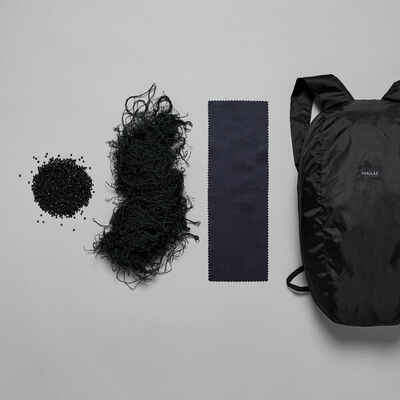TECHNICAL FEATURES OF THE ROPE
NUMBER OF FALLS: 7
IMPACT FORCE: 870 DaN
DYNAMIC ELONGATION: 31.1%
STATIC ELONGATION: 6.3%
SHEATH SLIPPAGE: 0
NUMBER OF SPINDLES: 32
WEIGHT
66 g/m
PLEASE NOTE: Weight measurements made according to the EN 892 standard.
For example, for a single rope, the rope must be exposed to 10 kg of tension for 1 minute in very precise temperature and moisture conditions.
This gives you the real weight of the rope, which is often superior to the weight given by the standard.
The weight measurement according to the standard is used to compare two ropes to each other.
TREATMENT FOR BETTER FLUIDITY
This rope features a plasma treatment which helps to improve the rope's smoothness when feeding it through karabiners and belay devices.
MIDDLE MARKING
To improve your safety, this rope features a black mark which indicates the middle of the rope.
HOW TO CHOOSE THE RIGHT ROPE LENGTH
Note that the length of rope needed depends on the terrain as well as the height.
Be sure to check with a staff member before climbing.
Additionally, as a rope ages - no matter the brand - it may expand and shrink. We recommend you re-measure regularly.
MADE IN FRANCE
All of our ropes are designed and tested in Chamonix, in the Mont Blanc valley.
They are made in northern France by our manufacturing partner, Cousin, expert rope makers for 170 years.
WASHING YOUR ROPE
It's important to properly care for your rope to reduce wear.
As dirt wears ropes down, we recommend:
1- using a rope cover;
2- If the rope is dirty, wash it in fresh, lukewarm water.
Should stains persist and you wish to wash it with soap, it's important that you use a pH neutral soap (such as Marseille/household soap) and rinse very well in fresh water afterwards.
3- Air dry the rope out of the sun and away from all sources of heat.
STORING YOUR ROPE
Ropes should be stored in a cool, dry place, away from light, humidity, and corrosive agents. Never leave ropes inside a car during summer, for example.
CHECKING YOUR ROPE
It is important to check your rope regularly. To do so, run the rope through your hands and inspect it metre by metre along its entire length. This will allow you to spot any nicks, cuts, or weak spots. If you notice any anomalies or irregularities, if the core is visible in certain places, if the rope is deformed or has exceeded its fall rating, it must be changed. Take safety seriously!
CLUB OR GROUP USE
Ropes come under heavy strain when used by clubs or groups: Top-roping, falls, various belay devices, intense friction from walls or the karabiners used. This means the rope will wear out much faster. Our field tests indicate an average of 6 months.
ROPE LENGTH EVOLUTION
As they get older, all climbing ropes get shorter. Usually, they get 2 to 5% shorter, but this can reach up to 10% depending on humidity, heat, falls, washing, etc. To decrease this effect, we calculate an extra margin of length when manufacturing our ropes, but sometimes this isn't enough. This is why we recommend regularly measuring your rope and checking the rope’s middle mark.
CERTIFICATION
CE-certified rope according to the standard EN 892:+A1: 2016
 Process
Process